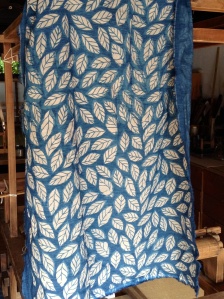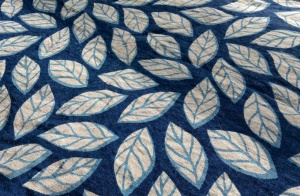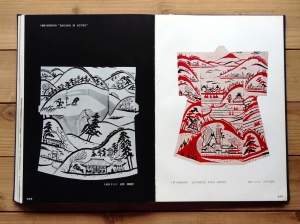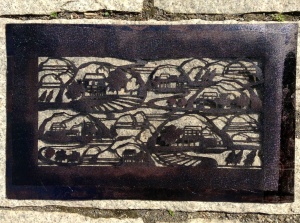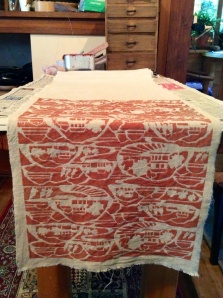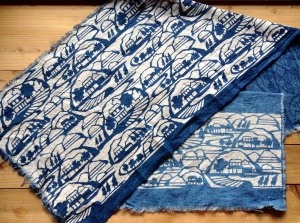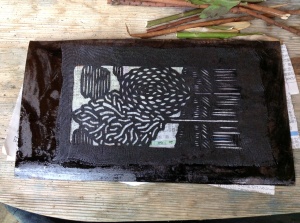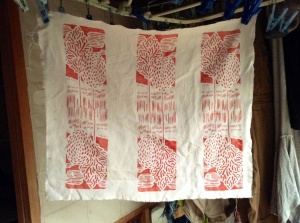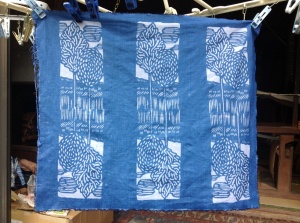inspiration: the greenery around me and classic katazome stencils featuring detailed leaves on a dyed background
stencil 1: open leaf; stencil 2: leaf veins. This was my first attempt at designing a 4 way repeat, so let’s just ignore all the places where things don’t quite meet up. The third small stencil is to sign my work. (And if I ever remember to paste it on anything I hope it looks cool.)
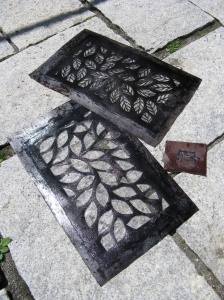
in progress: pasting the open leaves. (Yes, that is a 95 year old Japanese shibori artist in the background; she’s making all of us lunch!)
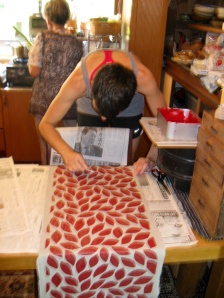
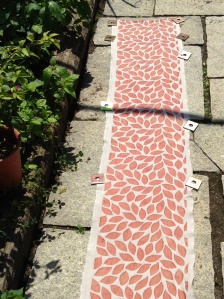
in progress: removing the paste after the first indigo dye series by washing it in the river
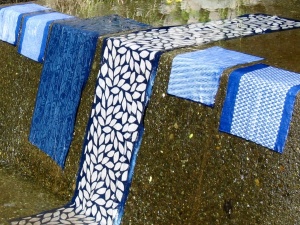
in progress: The red paste is the second pasting using the leaf veins stencil.
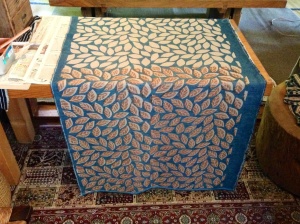
in progress: removing the paste after the second dye bath
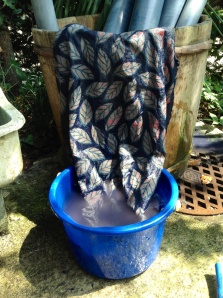
results: two different samples dyed with indigo
